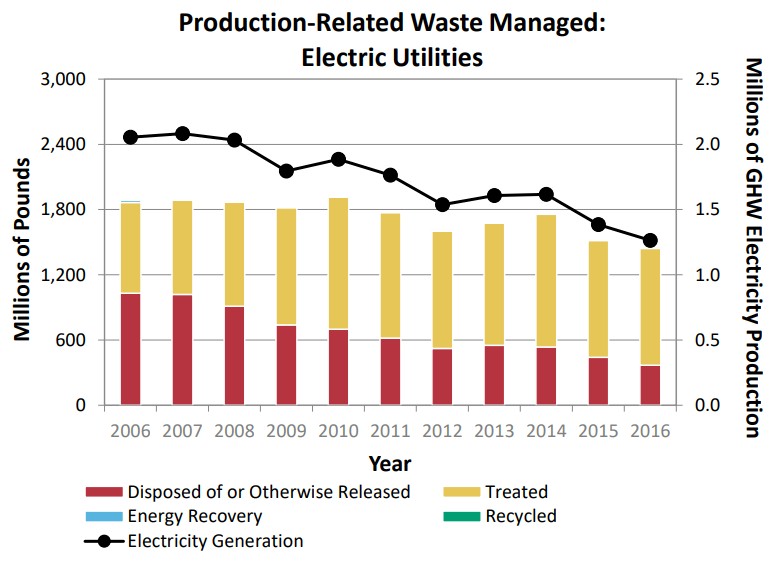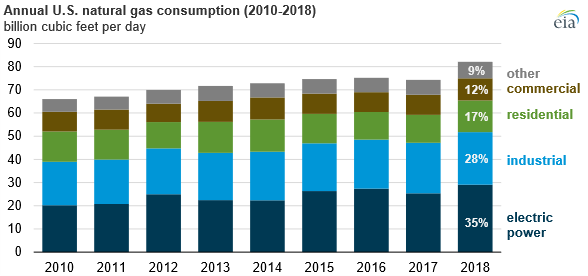U.S. natural gas consumption increased by 10% in 2018, reaching a record high of 82.1 Bcfd, according to EIA’s recently released Natural Gas Monthly.
Domestic consumption of natural gas increased across all sectors in 2018, led by a 3.8 Bcfd increase in the electric power sector caused by a combination of recent natural gas-fired electric capacity additions and weather-related factors.
Natural gas consumption also grew in the residential, commercial, and industrial sectors in 2018, increasing 13%, 10%, and 4% compared with 2017 levels, respectively. Both commercial sector (9.5 Bcfd) and industrial sector natural gas use (22.7 Bcfd) reached record highs in 2018, while residential natural gas use (13.6 Bcfd) reached its highest level since 2014.
Natural gas consumption in these sectors was driven by increased demand for space heating during the winter and by industries that require natural gas as feedstock or for process heat.
Williams handles approximately 30% of U.S. natural gas, with its Transco pipeline delivering approximately 15% of U.S. natural gas consumed.

